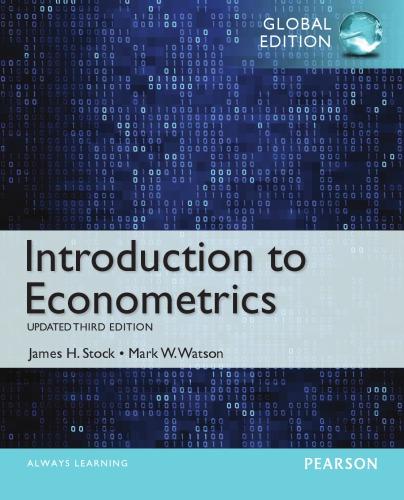E12.1 How does fertility affect labor supply? That is, how much does a womans labor supply fall
Question:
E12.1 How does fertility affect labor supply? That is, how much does a woman’s labor supply fall when she has an additional child? In this exercise you will estimate this effect using data for married women from the 1980 U.S. Census.4 The data are available on the textbook website, www
.pearsonglobaleditions.com/Stock_Watson, in the file Fertility and described in the file Fertility_Description. The data set contains information on married women aged 21–35 with two or more children.
a. Regress weeksworked on the indicator variable morekids, using OLS.
On average, do women with more than two children work less than women with two children? How much less?
b. Explain why the OLS regression estimated in
(a) is inappropriate for estimating the causal effect of fertility (morekids) on labor supply
(weeksworked).
c. The data set contains the variable samesex, which is equal to 1 if the first two children are of the same sex (boy–boy or girl–girl) and equal to 0 otherwise. Are couples whose first two children are of the same sex more likely to have a third child? Is the effect large? Is it statistically significant?
d. Explain why samesex is a valid instrument for the instrumental variable regression of weeksworked on morekids.
e. Is samesex a weak instrument?
f. Estimate the regression of weeksworked on morekids, using samesex as an instrument. How large is the fertility effect on labor supply?
g. Do the results change when you include the variables agem1, black, hispan, and othrace in the labor supply regression (treating these variable as exogenous)? Explain why or why not.
Step by Step Answer:

Introduction To Econometrics
ISBN: 9781292071367
3rd Global Edition
Authors: James Stock, Mark Watson






